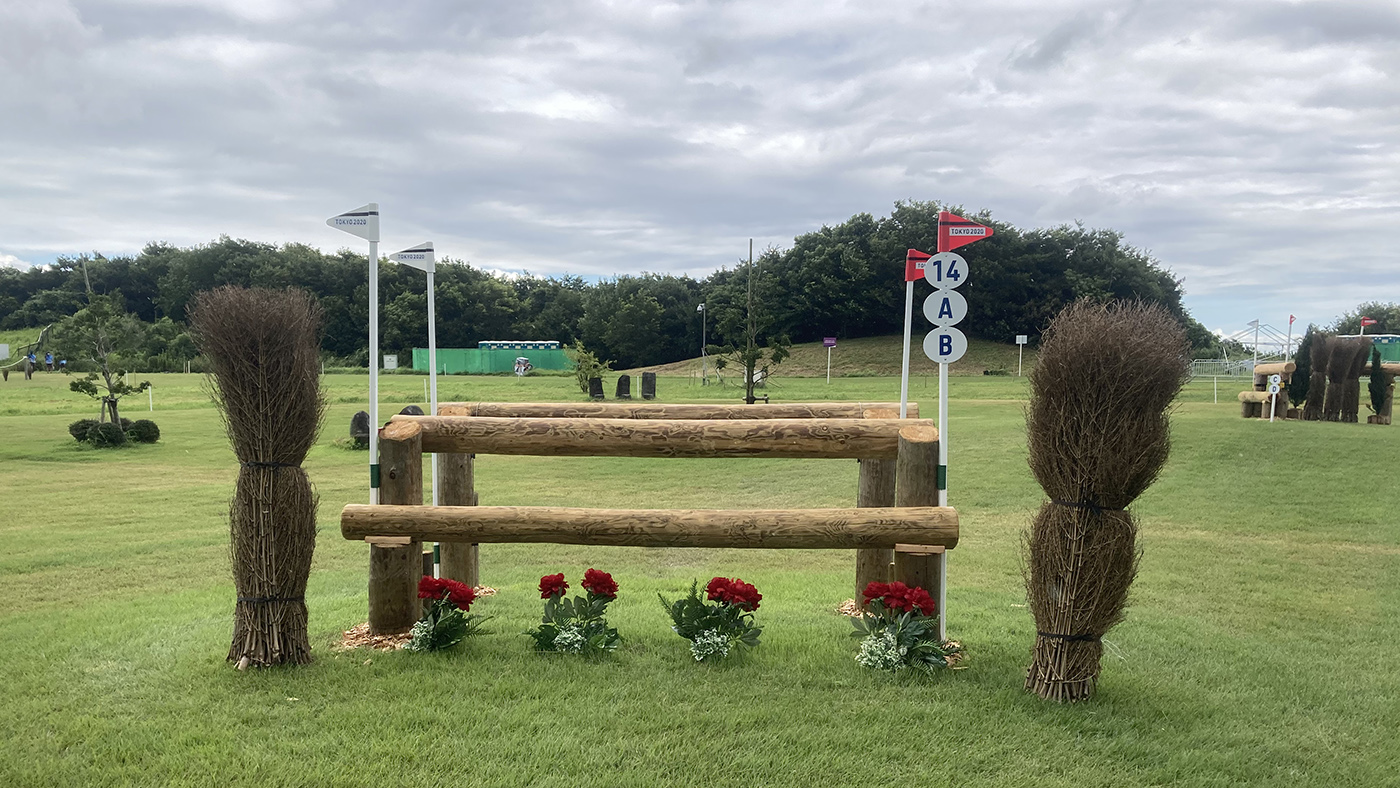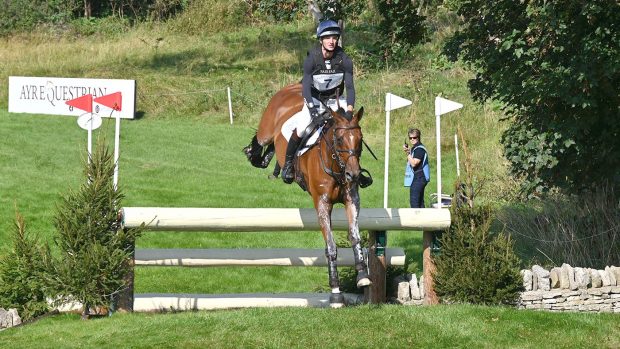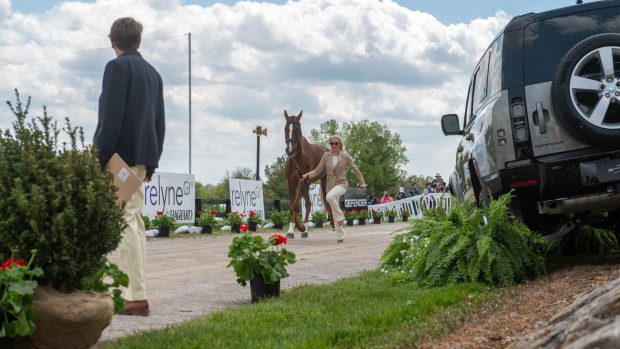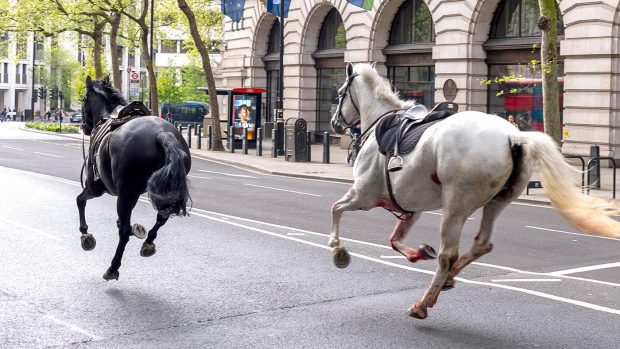Riders are in agreement that Derek di Grazia has done a great job as designer for the Tokyo Olympics cross-country course and predict that it will provide a suitable challenge for the competition.
“The course is a ‘four and a half star’ and is very intense – you’re always on the climb or the camber or in the water or in a combination,” said Oliver Townend, who will be the first rider out for the British team.
“But the questions are extremely fair and it’s very horse friendly. If you took each fence individually there wouldn’t be too many problems, but when you add the heat, the terrain, the Olympic pressure and then speed on top of that, it’s going to cause a lot of trouble and it’s going to be very difficult to get the time.”
Oliver has ridden tracks put together by Derek di Grazia several times at Kentucky Three-Day Event.
He added: “Derek is a horseman, which is a very nice start to being a course-designer. I think he’s a very special course-designer, a very talented man at the job.
“For me, this is a very different track to Kentucky, but it still has the feel that he wants the horses to see where they are going. There are no tricks, which you can get quite a lot in the modern day sport with people trying to catch horses. He doesn’t want to catch the horses out. He builds very see-able questions and lets speed and terrain do the job for him.”
US rider Doug Payne echoed Oliver’s thoughts, saying that horses have “a really good shot to try and assess what’s being asked” and that Derek has done an excellent job at making the course as flowing as possible in the tight space available.
He also pointed out that in a number of places, the time difference between routes is minimal, so it’s about trying to find a smooth flowing line for your horse.
Finally, talking about the time, Doug said: “The first and last minute are tough to make up any sort of time, but I think in the middle there’s a couple of spots where you’re going to have to go forward if you want to be close to the time.”
Tokyo Olympics cross-country course: ‘Perfect for this championship’
Alex Hua Tian, who will be followed by two less experienced riders in the Chinese team, commented: “I think it’s a cleverly designed, balanced course which is perfect for this championship. The time will be really tight, which will put a lot of pressure on the traditional nations.
“I think going quickly around that track, the course is intense enough that some superstars will make a mistake in the heat of the moment. But there are enough long ways round that are not actually too time consuming, and not too tiring, for the greener nations like us to take and have a safe strategy for the team cross-country plan.”
Irish rider Sam Watson said: “I think it’s clever – you walk it and you go, that’s a very fair course, but you’ve got to remember what the format is. The team that makes the least mistakes wins medals here, and he’s given us plenty of opportunity to make mistakes.
“There are not many one-stride distances at all and very few two-stride distances, so not many fences where you can just jump in and then momentum takes you through. You’ve got to jump in and either hold your line or attack the line. You’ve got to make choices, so when you’re doing that over a lot of combinations, you could find people sometimes make the wrong decision and get into trouble.

Sam picked out fence 14abcd, the Lone Tree Moguls (above), as an example of somewhere on the Tokyo Olympics cross-country course where riders will need to know plan A and plan B, saying: “The oxer is a big fence and you could go on quite an attacking five strides or a little bit quieter on six. You just don’t know how they’re going to jump that big oxer, if they’re going to land a little bit steep. Derek has given us decisions everywhere.”
Sam also mentioned fence 23abcd, the Mount Fuji Water (pictured, top): “The last water’s got plenty jumping in it as well. You want to have a lot of horse left underneath you.”
Vittoria Panizzon, first out for the Italian team, mentioned that the warm-up is in quite a different area to the start.
She said: “The warm-up is down the bottom of the hill and then you go right up the top of the hill to set off so the horses won’t have seen what’s going on, what environment they’re in. It’s going be a bit of a surprise, I think, when you suddenly set off and you even set off uphill so all they can see when you get up there is the start.
“It perhaps wouldn’t be the biggest course many people have done, but the situation will make it far more challenging than it could look at first. As well as the warm-up, it’s very hard to get your bearings because it’s so twisty. I think the horses need have a lot of trust in the rider, because they’re not always going to be sure where they’re going, what’s happening.”
You might also be interested in:

Walk the Tokyo Olympics cross-country course: photos of every fence

The fences that will decide the eventing medals: analysing the Tokyo Olympics cross-country course

‘We know he’s special and I’m just very grateful for him’: Oliver Townend gets British Olympic eventing team off to a blistering start

‘Time will be quite a factor’: Tokyo Olympics cross-country course-designer analyses the challenge ahead

Subscribe to Horse & Hound this spring for great savings
Horse & Hound magazine, out every Thursday, is packed with all the latest news and reports, as well as interviews, specials, nostalgia, vet and training advice. Find how you can enjoy the magazine delivered to your door every week, plus options to upgrade your subscription to access our online service that brings you breaking news and reports as well as other benefits.




